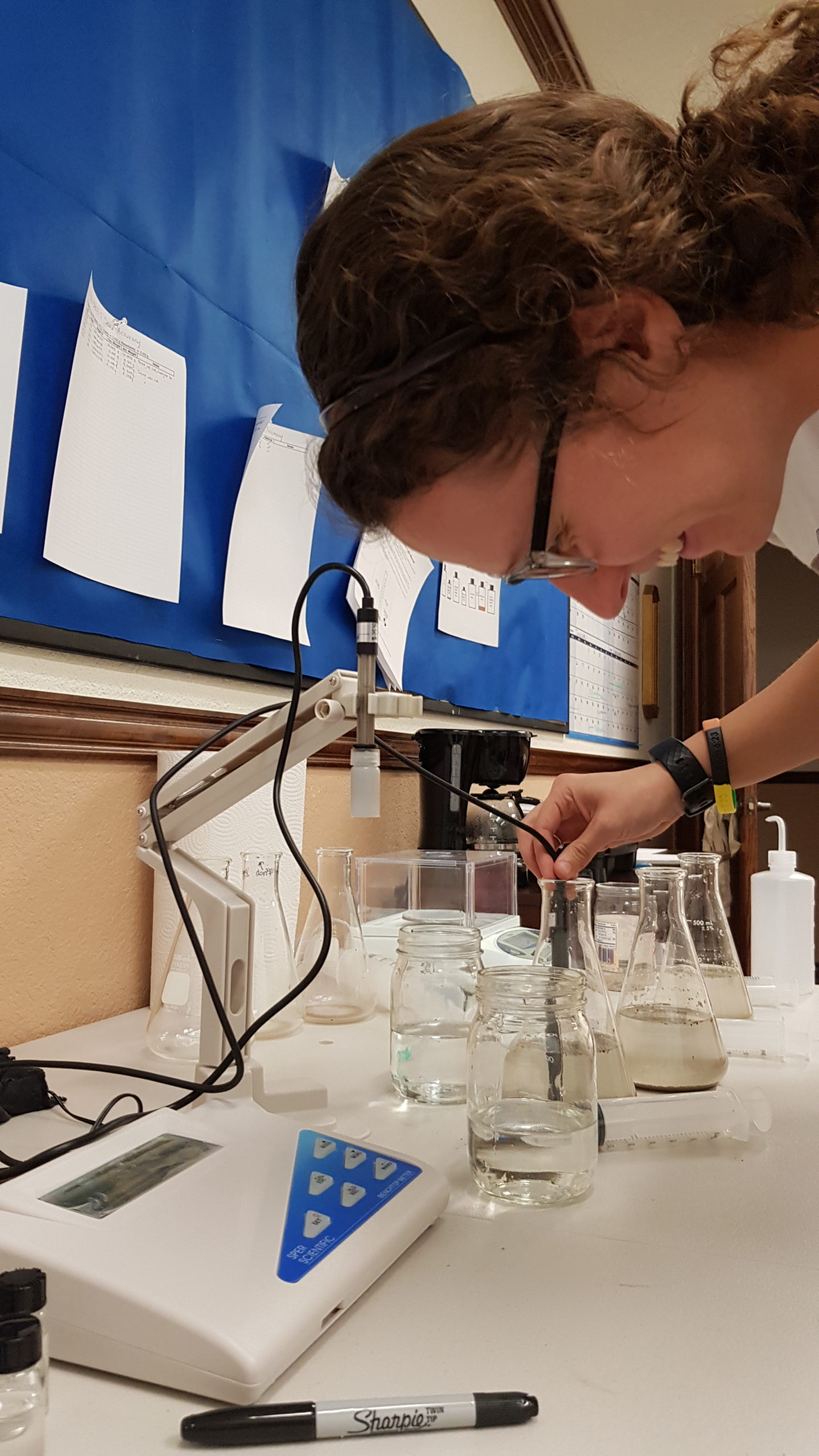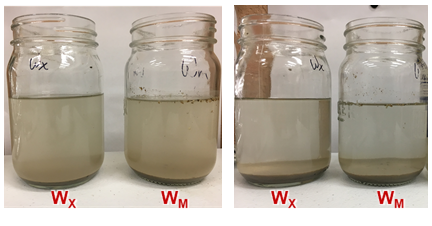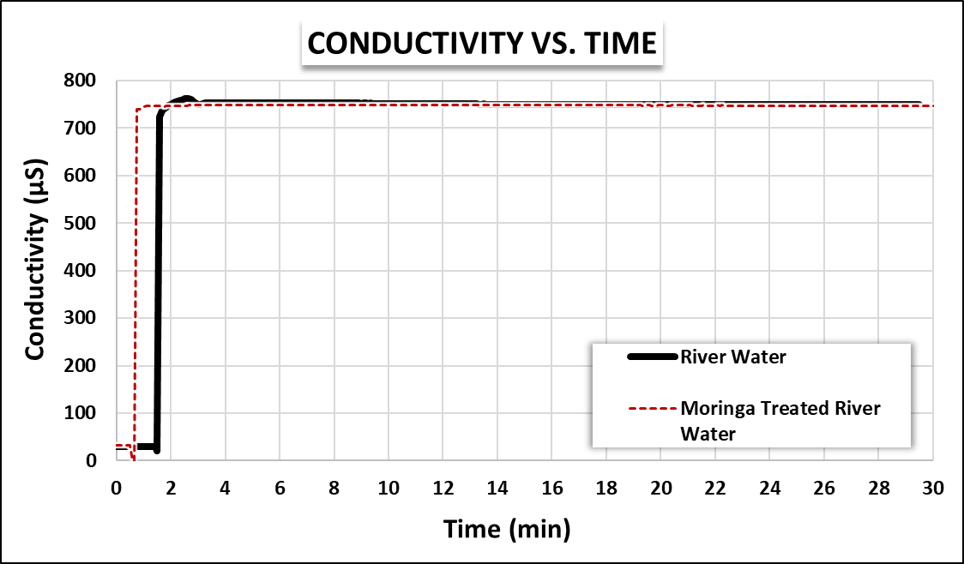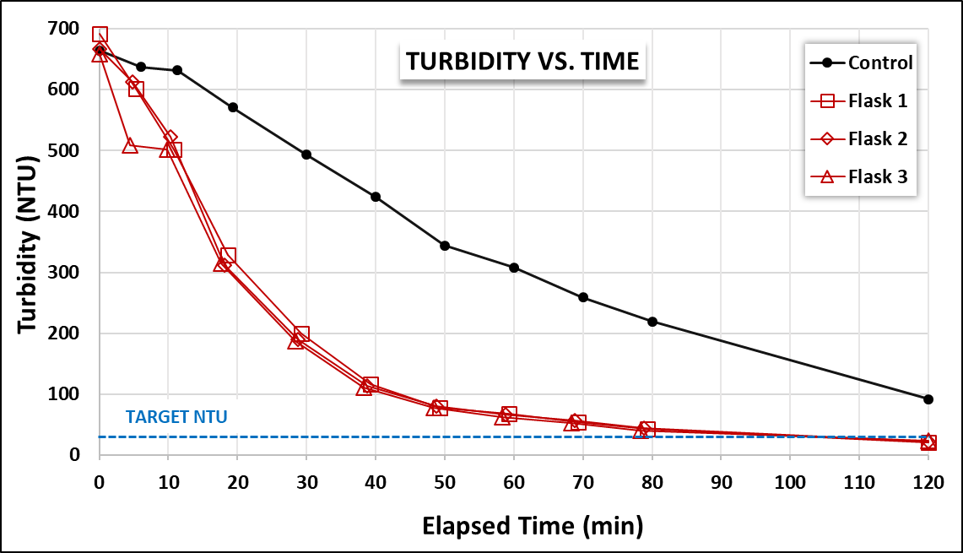“God did not inform us of all the possible practical uses of plants and animals. Instead He made us in His image and gave us big, clever, curious, problem-solving brains, and then told us to figure things out and solve problems.”
~ Gordon Wilson, A Different Shade of Green, ch.8
Recap:
In June, 2019, David and his son, Finn, spent several afternoons in Cambodia testing pre-filter designs to use for the pit water in the village of Brasat Trav. The suspended sediment in the pit water was too fine, however, for the constructed pre-filter to adequately remove the solids. On their last afternoon in the village, David and his team had success in settling out the sediment in a water bottle (approx. 500 mL) by using an extract solution from crushed Moringa oleifera seeds.
Since Kaley began her internship with Sweetwater in October, she has been doing research in scientific literature to inform how Sweetwater can implement the use of M. oleifera in Brasat Trav. They are doing stateside experiments to determine the best way to optimize the upscaling of moringa to clarify 50 gallons of water at a time, rather than 500 mL.
Praises:
We have lab equipment! Over the past several months the Lord has provided the financial means for Sweetwater to purchase needed lab equipment, allowing David and Kaley to begin their experimental trials.
Experiment Updates:
Based on the information Kaley gathered from her literature review, we have begun to narrow down optimization ranges for each variable to then test in our own experimental trials. Test variables include moringa concentration, mixing time and mixing speed of moringa in dirty water, settling time after mixing, and particle size of crushed moringa. We also identified questions to pursue regarding the use of M. oleifera as a flocculant that the current literature does not address.
Since the start of 2020, we have run preliminary mock tests using crushed moringa seeds in muddied Bosque River water to determine if moringa works on a local water source. We were encouraged to see that the sediment floating in river water that was treated with moringa extract settled out much more rapidly than the untreated river water!
Kaley has also been working with our new lab equipment to become familiar with the software and to test the specified accuracy and precision of the instruments in the context of our experiments. Now that experimental trials have launched, we are fine-tuning our experimental method by asking and answering questions, such as:
Q: Is M. oleifera more effective when crushed seeds are added directly into dirty water or by adding extract made from crushed moringa seeds?
A: In our initial experiments we observed no difference between the two (Fig. 1). Therefore, for the remainder of our experiments, and for our implementation strategy in Cambodia, we will add seeds directly to the dirty water to eliminate unnecessary steps and complications from creating a seed extract.
Q: Does conductivity change over time when water is treated with crushed seeds of M. oleifera?
A: It is reported in scientific literature that one of the benefits of using moringa versus other synthetic flocculants is that it does not affect conductivity and pH of the water. To make sure our observations aligned with literature reports, we collected conductivity data over a period of approximately 30 minutes. Samples of untreated river water and moringa-treated river water were tested simultaneously, and conductivity remained constant in both instances (see Fig. 2).
Q: How many replications are necessary to give us confidence in our results?
A: Thus far we’ve run triplicate tests (three replications) for two different doses of moringa. The three replicates are sufficient in our view, in light of our current resources, to inform how different variables affect turbidity. Therefore, we plan to use triplicates for the remainder of our experimentation so that we use the least amount of water and moringa as possible while securing some confidence that our observations represent reality. For an example of a dataset collected from one of our triplicate tests see Fig. 3.
Fig. 3. This graph shows that river water treated with crushed moringa seeds at a concentration of 500 mg/L (Flasks 1-3) settles suspended particles faster than gravity alone (Control). The graph also shows the similar turbidity settling rates of the three replications. From this we can infer that a moringa concentration of 500 mg/L with two hours of settling time is sufficient for turbidity to drop below the target NTU (25 NTU).
What’s Next?
We continue to work out the kinks in our experimental design. Once these have been worked out, we will begin collecting data regarding at what ranges our variables facilitate peak productivity in the upscaled use of crushed moringa as a natural water clarifier in Cambodia.
